博文
华盛顿大学的无电池手机(附原文)
|||
华盛顿大学的无电池手机(附原文)
诸平
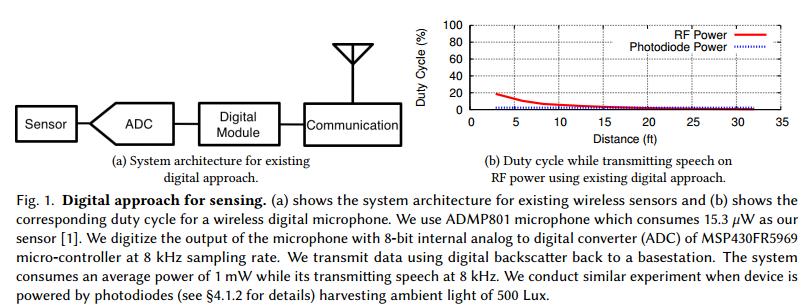
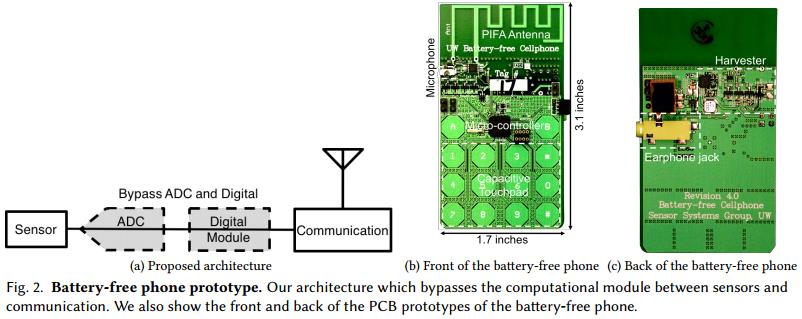

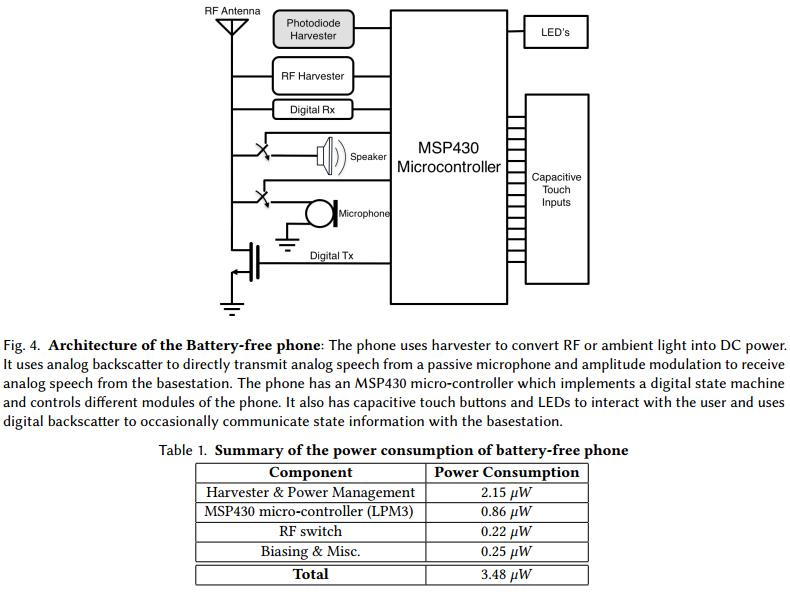


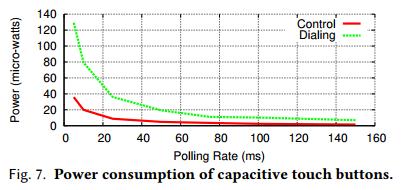
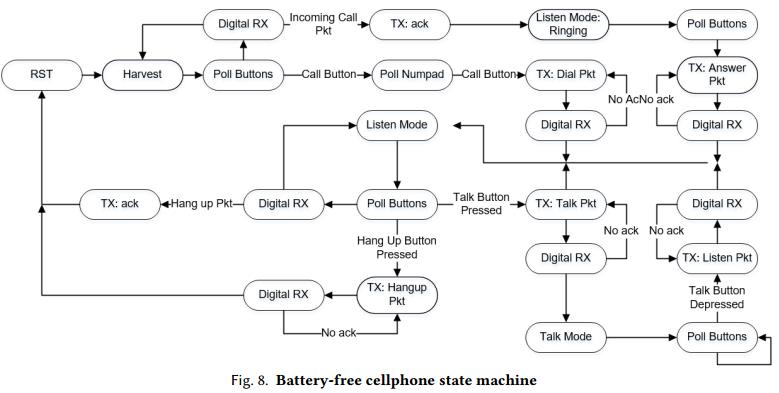




智能手机的优缺点
智能手机(Smartphone)又被称为智慧型手机、智能型电话等,是指“像个人电脑一样,具有独立的操作系统,可以由用户自行安装软件、游戏等第三方服务商提供的程序,通过此类程序来不断对手机的功能进行扩充,并可以通过移动通讯网络来实现无线网络接入的这样一类手机的总称”。
目前的智能手机被认为有五大特点:
1)具备无线接入互联网的能力;
2)具有PDA的功能(包括个人信息管理即PIM、日程记事、任务安排、多媒体应用以及浏览网页等。);
3)具有开放性的操作系统:拥有独立的核心处理器(CPU)和内存,可以安装更多的应用程序,使智能手机的功能可以得到无限扩展。
4)人性化:可以根据个人需要扩展机器功能。根据个人需要,实时扩展机器内置功能,以及软件升级,智能识别软件兼容性,实现了软件市场同步的人性化功能。
5)功能强大:扩展性能强,第三方软件支持多。
但是,也有其不足之处,耗电量大、机身略大、价格略贵。价格问题是智能手机普遍存在的较高难题,另外还有易用性较差,新手需要慢慢适应。那些对电脑以及手机不是很熟悉的人来说,如果你想玩转一个智能手机,不花点时间好好钻研钻研是不行的,毕竟如今的智能手机就好比是一台缩小版的PC。一般普通手机多以人性化非常到位的9宫格和12宫格界面,让用户轻松上手。而智能手机可以自由定制界面,更加的灵活。但是由于智能手机的便捷性,很快便风靡全球,其制造成本也比非智能高,不过随着制造工艺的提升和电子元器件的降价,智能手机的价格已经明显便宜多了。除了价格问题再就是智能手机的耗电量问题,智能手机的CPU、屏幕等硬件的耗电量是不可忽视的,这些硬件很容易就将电量耗尽,再加之现在的智能手机也越来越追求时尚轻薄,其小小的电池容量就显得更加难以应对了。以前认为这方面是没有解决办法的,因此只能是提醒智能手机用户,别老没事儿就玩手机!但是,现在对于这个问题有了新的解决方案——华盛顿大学(University of Washington,简称UW)的科学家开发出无需电池的手机(Battery Free Cellphone) 。
UW的无电池手机
据华盛顿大学(University of Washington,简称UW)2017年7月5日提供的消息,该大学的研究人员已经成功地开发出无需电池的手机,但是并非是手机不需要电能,而是通过使用特种技术从环境获取能量。
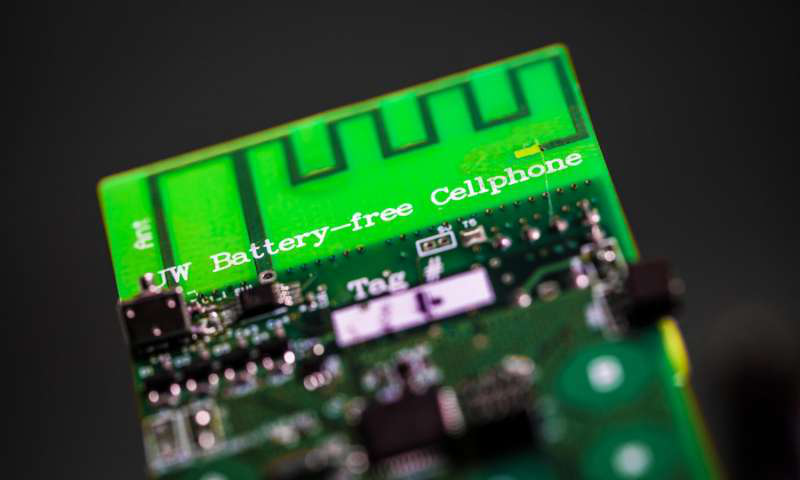
Fig. 1 UW engineers have designed the first battery-free cellphone that can send and receive calls using only a few microwatts of power. Credit: Mark Stone/University of Washington
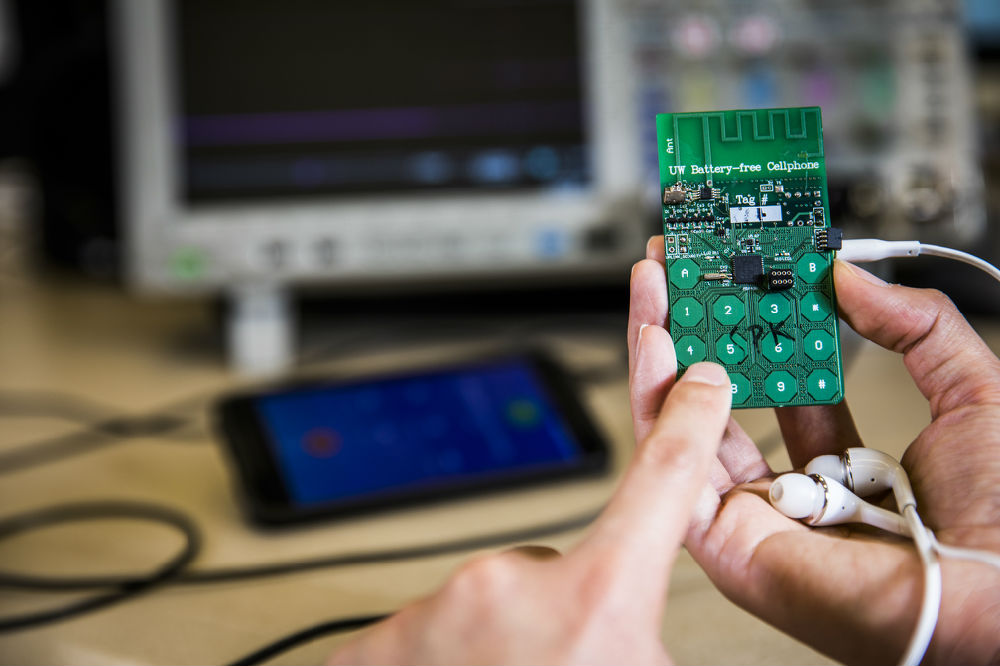
Fig. 2 The battery-free phone developed at the UW can sense speech, actuate the earphones, and switch between uplink and downlink communications, all in real time. It is powered by either ambient radio signals or light. Credit: Mark Stone/University of Washington
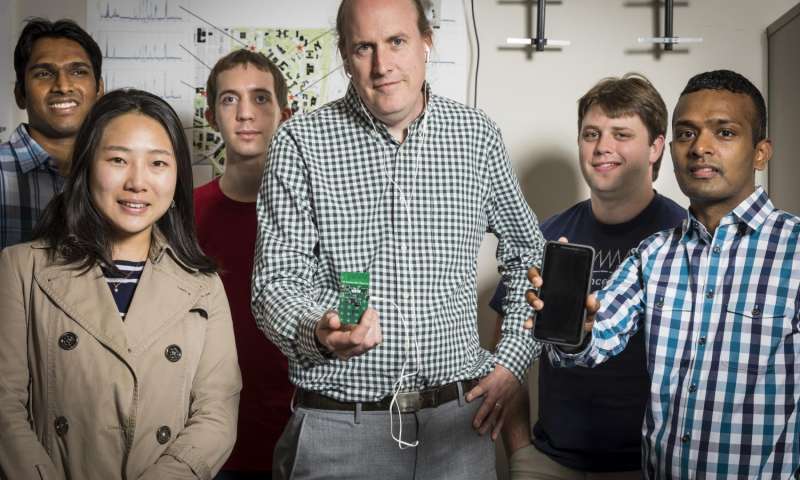
Fig.3 The research team from the UW Department of Electrical Engineering and the Allen School of Computer Science & Engineering includes (left to right): Vamsi Talla, Wu Meiling, Sam Crow, Joshua Smith, Bryce Kellogg and Shyam Gollakota. Credit: Mark Stone/University of Washington
UW的研究人员已经发明了一种首例无电池手机,如图1所示。这种手机不需要电池,仅用几毫瓦的电力就可以进行发送和接收电话。这种手机与传统的手机相比较,因为无电池,充电器、电线自然没有必要了。所以这不能不说是一大飞跃。而且,使用电话仅需要几毫瓦的电力,从周围的无线电信号或光源均可获得。该研究小组还使用无电池手机演示打网络电话(Skype Calls),证明由商业化的、现成的组件构成的手机原型可以接收和传输讲话和与地基站进行沟通。
此项新技术于2017年7月1日在Proceedings of the Association for Computing Machinery on Interactive, Mobile, Wearable and Ubiquitous Technologies 杂志网站发表——Vamsi Talla, Bryce Kellogg, Shyam Gollakota, Joshua R. Smith. Vamsi Talla et al, Battery-Free Cellphone(免费下载原文). Proceedings of the ACM on Interactive, Mobile, Wearable and Ubiquitous Technologies, 2017, 1(2), Article No. 25. DOI: 10.1145/3090090
UW保罗·艾伦计算机科学与工程学院(Paul G. Allen School of Computer Science & Engineering at the UW)副教授、合作者Shyam Gollakota说:“我们已经创建了我们认为是第一个能耗几乎为零的功能手机,为了成为实现,真正的低功耗就是打电话需要的能量,仅靠环境获取即可满足,因此,我们不得不从根本上重新考虑这些设备的设计。”
UW网站介绍:我们推出了第一个无电池的手机设计方案,它只消耗少量的电能。我们的设计可以感知语音,驱动耳机,并在上行线(uplink)和下行线(downlink)通信之间进行实时切换。我们的系统优化了语音的传输和接收,同时获取能量使无电池手机保持连续工作的能力。这个无电池的设备原型是在一个印刷电路板上使用商用现成的组件而构成的。此手机的运行能量是由距离31英尺(约9.4米)外的基站传输的射频信号提供的。此外,利用微小的光电二极管(tiny photodiodes)也可以从环境光源中获取能量,我们可以证明我们的设备可以与50英尺(约15.2米)之外的基站进行通信。最后,我们演示了用无电池手机在整个移动网络之内,通过我们自定义的桥式基站首次实现网络电话通话。我们相信,这是无电池设备能力的一个重大飞跃,也是迈向全功能无电池手机的重要一步。
更多信息请注意浏览原文:
http://batteryfreephone.cs.washington.edu/files/batteryFreePhone.pdf
http://batteryfreephone.cs.washington.edu/
https://phys.org/news/2017-07-battery-free-cellphone-harvesting-ambient-power.html
Energy-harvesting phone works without battery
Abstract
We present the first battery-free cellphone design that consumes only a few micro-watts of power. Our design can sense speech, actuate the earphones, and switch between uplink and downlink communications, all in real time. Our system optimizes transmission and reception of speech while simultaneously harvesting power which enables the battery-free cellphone to operate continuously. The battery-free device prototype is built using commercial-off-the-shelf components on a printed circuit board. It can operate on power that is harvested from RF signals transmitted by a basestation 31 feet (9.4 m) away. Further, using power harvested from ambient light with tiny photodiodes, we show that our device can communicate with a basestation that is 50 feet (15.2 m) away. Finally, we perform the first Skype call using a battery-free phone over a cellular network, via our custom bridged basestation. This we believe is a major leap in the capability of battery-free devices and a step towards a fully functional battery-free cellphone.
https://blog.sciencenet.cn/blog-212210-1065564.html
上一篇:有机分子检测描绘出土星卫星复杂的照片
下一篇:Nat. Comm.:分子控制3-D成像,比星球大战更精彩